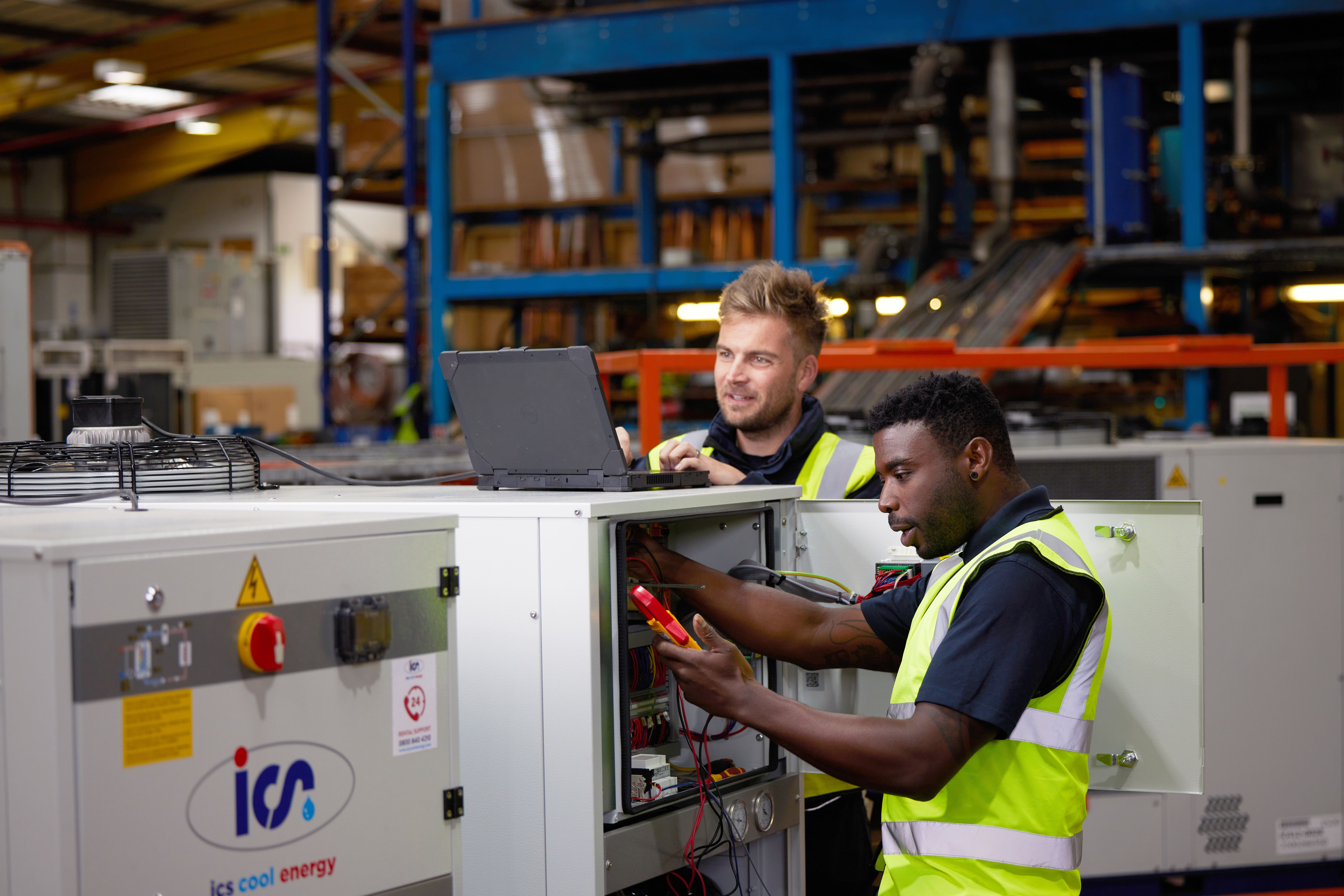Free Cooling is a fast and effective, economic method of using low external air temperatures. It can be used to assist in cooling water for industrial temperature control applications or in HVAC systems.
A chiller’s traditional design uses integral compressor technology to generate the cooling required for process and HVAC applications.
The use of Free Cooling in an industrial temperature control application differs from an environmental cooling solution as fresh ambient air cannot be drawn straight into the cooling circuit. Therefore, to harness the benefits of the low ambient temperatures, a Free Cooling coil needs to be introduced into the circuit.
A Free Cooling coil is installed in series with the chiller system’s evaporator so in lower ambient conditions, partial or 100%, Free Cooling can be achieved. This method of operation, makes the most of natural low ambient temperatures and in doing so benefits from a reduction in energy costs of up to 80%.
As the ambient air temperature drops at least a degree below the process return water temperature, the benefits of Free Cooling start and the external ambient temperature can begin to cool a process in place of a chiller.
As the ambient temperature drops 3°C to 5°C below the required process supply water temperature, total Free Cooling can be achieved, taking over fully from the chiller’s compressors and consequently providing an environmentally-friendly and cost-effective approach to process and HVAC cooling.
High Ambient
When the process return water temperature required is equal to or higher than the ambient air temperature Free Cooling is not suitable. The system’s three-way valve will continue to direct the fluid flow through the chiller’s compressors to be cooled to the required set point temperature.
Mid-season operation
For mid-season operation the water is partially cooled by the compressor and partially by the ambient temperatures. The percentage of Free Cooling achieved mid-season depends on seasonal temperatures although partial Free Cooling starts when the ambient air temperature is 1o°c below the process return water temperature. The water is partially cooled through the Free Cooler then flows through the chiller’s compressors to achieve the required set point temperature.
Winter operation
When the outdoor temperatures are low enough, the water is chilled solely by the Free Cooling coil. This allows the chiller’s compressors to stop operating, saving significant amounts of energy. The only electrical power used in winter operation is for fan operation. This can be achieved once the ambient air temperature is 3°c – 5°c below the process supply water temperature.
As a leading supplier of temperature control solutions, ICS Cool Energy is able to offer Free Cooling systems for both sale and hire to ensure customers achieve the greatest energy savings to suit their business and application requirements. Please contact us on 0800 774 7426 for more information or a no-obligation consultation.
Related Articles

October 30, 2025
Meeting the Pressures of Modern OEM Design. Why Accredited Cooling Systems Make the Difference
Tight budgets, compressed timelines, and rising expectations: how OEMs can help ensure reliability and performance of their solutions through smarter cooling partnerships. Original equipment manufacturers...
Read More
September 12, 2025
Size Does Matter – Especially When It Comes to Pipes in Process Temperature Control
There are several reasons why correct pipework selection is critical for the performance, efficiency, and reliability of temporary hire systems. ICS Cool Energy recognises that...
Read More
May 20, 2025
Why Seasonal Energy Performance Ratio (SEPR) Matters for Process Cooling.
The Manufacturer’s Perspective on Energy Efficiency, Compliance and Sustainability In the world of process cooling, selecting the right equipment is no longer just about capacity...
Read More